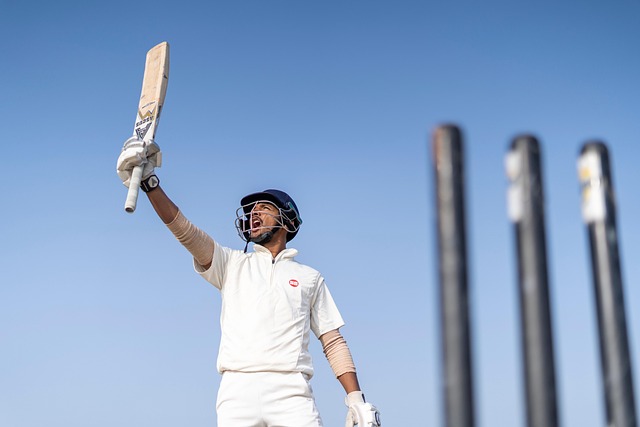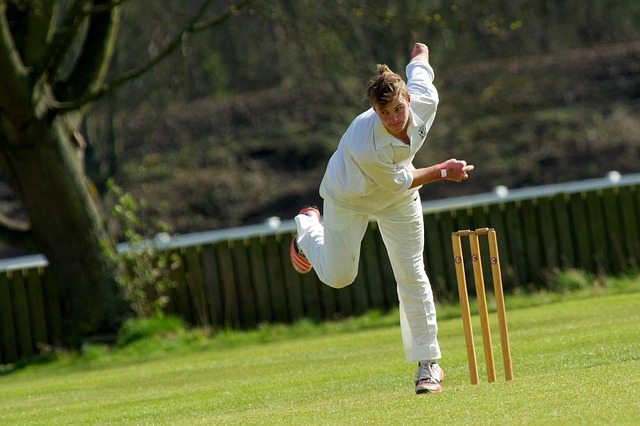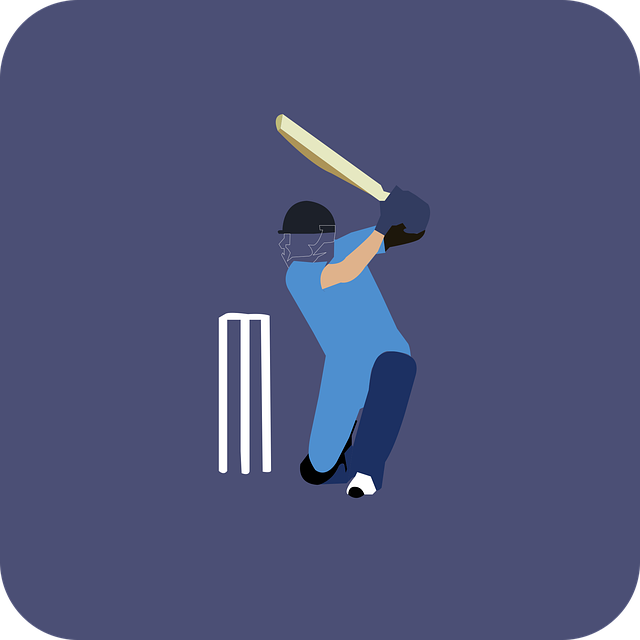
Cricket spin techniques, including topspin, leg spin, and off-spin, significantly impact ball trajectory and batting strategies. Understanding spins is vital for players and enthusiasts. Leg spin offers defensive control, while topspin adds bounce and unpredictability for fast bowlers. Spin bowlers enhance team coordination and commercial value through strategic placements that disrupt batting rhythms. Mastery of various spins prevents injuries and improves performance, as demonstrated by legendary bowlers like Shane Warne and Anil Kumble. The importance of spin in cricket's evolving rules underscores its crucial role in match outcomes and fan engagement.
In the intricate world of cricket, understanding spin techniques is a game-changer. This sport, rich with strategy, relies on bowlers’ ability to manipulate the ball’s trajectory. From leg spin’s defensive prowess to topspin’s offensive punch, each spin type offers unique advantages. Our article guides you through the art of choosing the right spin for every situation, from bowling and fielding to batting against them. Discover when to deploy a googly mid-game or simply appreciate the beauty of different spins in cricket.
- Understanding Spin Types in Cricket
- When to Use Leg Spin for Defense
- Utilizing Topspin for Bowling Fast
- Spin in Fielding: When and Why
- Batters and Different Spin Techniques
- Strategic Use of Googly in Mid-Game
Understanding Spin Types in Cricket

In cricket, spin refers to the rotation of the ball as it moves through the air and bounces on the pitch, significantly influencing its trajectory and behavior. Understanding different spin types is crucial for both players and enthusiasts alike. Spin can be classified into several categories based on the techniques employed by bowlers and the resulting effects on the ball. These include topspin, where the ball spins forward, causing it to dip and bounce more; sidespin (or cut), which makes the ball curve sideways in flight; and backspin, characterized by a rotation that makes the ball spin backwards and rise as it approaches the batsman.
Cricket terminology dictionary defines these terms simply: topspin is achieved by swinging the bowling arm at an angle, sidespin involves applying lateral pressure with the fingers, and backspin comes from flicking the wrist or throwing the ball with extra spin. Knowing when to employ each type of spin depends on various factors, such as pitch conditions, weather, the batsman’s tendencies, and strategic considerations. For instance, a bowler might use topspin to make the ball bounce more, disrupting the batsman’s timing, while sidespin can be effective in making the ball swing unpredictably. Give us a call at cricket player profiles for more insights into these techniques as they unfold in the dynamic world of cricket.
When to Use Leg Spin for Defense

In cricket, leg spin is a versatile bowling option that can serve both attacking and defensive purposes. When facing an opposing team’s powerful batting line-up, employing leg spin for defense can be a strategic move. This type of spin bowling is particularly effective in containing the run rate and disrupting the batsman’s rhythm. The subtle variations in pace and bounce allow leg spinners to deceive even the most seasoned batters, making it a valuable asset during crucial moments in a match.
For defensive strategies, focusing on precision and variation is key. Leg spinners should aim to build a repertoire of different deliveries, such as top-spins, googlies, and flippers, to keep batters guessing. By mixing these up, the bowler can create uncertainty and potentially induce edge or catch behind, which is essential in limiting the flow of runs. Unlike aggressive spin tactics aimed at taking wickets, defensive leg spin focuses on controlling the game, especially during periods when maintaining a low run rate is vital. This approach not only helps in building pressure on the batters but also contributes to the overall cricket conditioning programs, ensuring the team remains in contention. Remember that effective coaching methods for youth cricket often emphasize the importance of understanding different bowling styles, including defensive leg spin, to become well-rounded players and adapt to various match situations. Find us at green cricket practices for more insights into enhancing your spin bowling skills and strategies, leveraging the latest cricket statistics analysis to refine your technique.
Utilizing Topspin for Bowling Fast

In cricket, topspin is a powerful tool for fast bowlers looking to gain extra bounce and swing on offer. By imparting a significant amount of rotation onto the ball, the bowler can create a sharp rise and sudden dip, making it more challenging for batters to predict and play their shot. This type of spin is particularly effective on tracks that offer some assistance, as the topspin will allow the ball to grip the pitch and move around sharply. During green cricket practices, fast bowlers should focus on generating topspin through a combination of wrist action and a consistent, agile run-up. A well-delivered topspinner can jolt even the most seasoned batters, ensuring that they are constantly on their toes—a key aspect of maintaining a competitive edge in this sport.
For those looking to enhance their bowling skills or seeking cricket mental health support, understanding different spin types is crucial. The art of bowling with topspin requires precision and a keen awareness of the pitch conditions. By mastering this skill, bowlers can prevent cricket injuries and prevention by adjusting their technique to suit various playing surfaces. Moreover, incorporating topspin into your arsenal can provide unique angles and variations, making you a more unpredictable and effective bowler on any given day. So, give us a call at cricket sponsorship value proposition for expert guidance and resources to elevate your game.
Spin in Fielding: When and Why

In cricket, spin is a vital tactical tool both in batting and bowling. When it comes to fielding, understanding when and why to employ different types of spin can significantly impact a team’s performance. Leg-spin, for instance, is highly effective against right-handed batters due to its ability to turn the ball sharply away from them. This technique often leads to catches at midwicket or leg side, making it a valuable asset in limiting opposition runs. On the other hand, off-spin bowlers can use their guile to deceive left and right-handers alike by creating movement both ways, which can result in wickets through edges or misjudged shots.
Fielding teams often opt for specific spin bowlers based on cricket sponsorship deals and marketing strategies, recognizing the commercial value of these players’ skills. The spin bowler’s role extends beyond simply taking wickets; they can also contribute to a strong fielding performance by improving overall team coordination and communication. For instance, giving us a call at cricket fantasy games cricket fitness for bowlers can provide insights into refining trading strategies in the field, ensuring every player maximizes their impact on the game. Effective spin bowling is not just about the art of the delivery but also its strategic placement to disrupt batting rhythms and create opportunities for fellow fielders.
Batters and Different Spin Techniques

In cricket, understanding when and how to employ various spin techniques is an art mastered by elite batters. Different types of spin serve distinct purposes on varying pitches and under varied weather conditions. For instance, leg-spin bowlers like Shane Warne and Anil Kumble have left indelible marks on the sport with their clever use of guile over raw pace. Their top-spinning deliveries, known as “googlies,” tricked even the best batters, showcasing the strategic depth that spin bowling offers.
On the batting front, players must adapt to these spin variations by employing techniques specific to each type. For example, a batter might need to adjust their stance and shot selection when facing off-spin, as opposed to dealing with the more predictable turn of leg-spin. Mastering these nuances can prevent cricket injuries and enhance performance; it also underscores the importance of understanding spin in the ever-evolving rules of the game, as seen in its history of rule changes. To learn more about these intricacies, one can refer to the comprehensive cricket terminology dictionary available on our website.
Strategic Use of Googly in Mid-Game

In the dynamic world of cricket, the strategic use of different spin types can turn the tide of a match. One such potent ball is the googly, a versatile and unpredictable delivery that has been a part of cricket history timeline for decades. Mid-game is an optimal time to employ this skill, as it allows bowlers to catch batters off guard and disrupt their rhythm. The beauty of the googly lies in its ability to deceive, with its late swing and turn that can trap even the most seasoned batsmen.
Effective use of spin during a match requires understanding team compositions and adapting to various batting styles. Women’s cricket highlights over the years have showcased the brilliance of spinners who masterfully navigate different conditions. Cricket governing bodies worldwide recognize the significance of spin in modern cricket, with strategies focused on enhancing player skills and fan engagement. Even so, true mastery involves more than just technique; it requires a deep understanding of the game’s ever-evolving dynamics, as exemplified by innovations like those found at cricket technology innovations that continue to revolutionize this classic sport.
In the intricate game of cricket, understanding when to employ different spin techniques is a fine art. From leg spin’s defensive prowess to topspin’s ability to bowl fast, each spin type offers unique strategic advantages. By recognizing the ideal situations for each—whether defending, attacking, or fielding—cricket players can enhance their performance and outwit opponents. The strategic use of spins, such as the enigmatic googly, further complicates batting, making it an indispensable skill for any cricket enthusiast.






